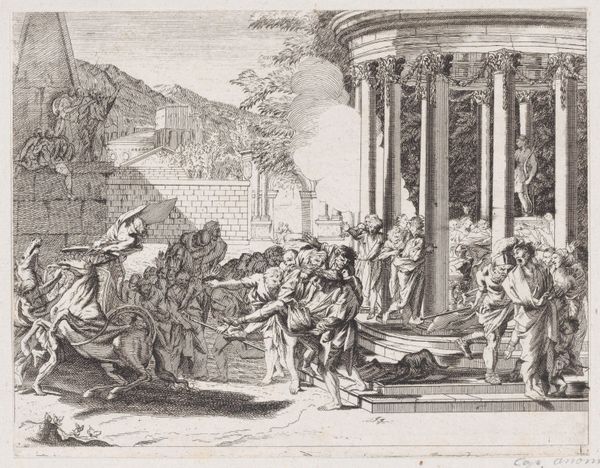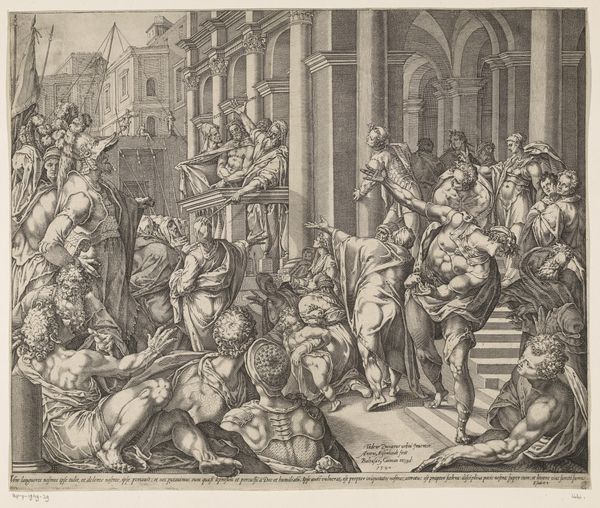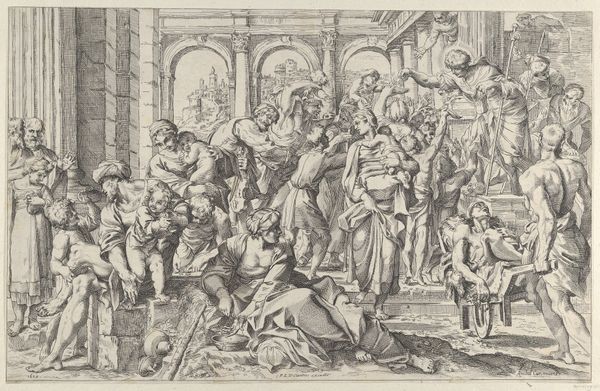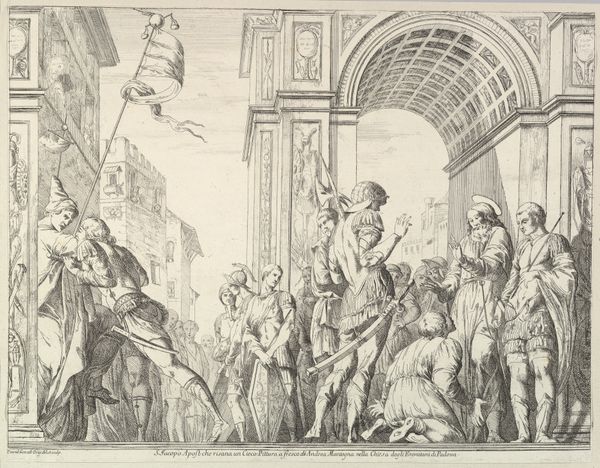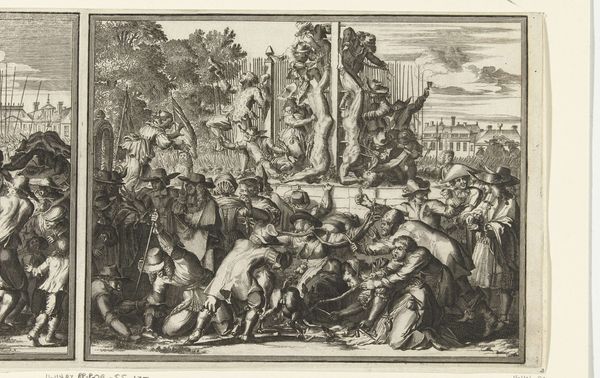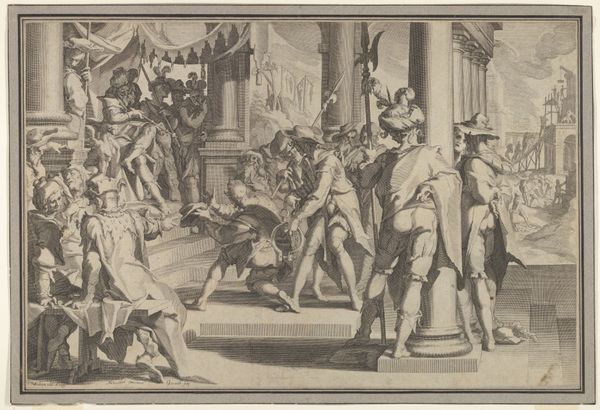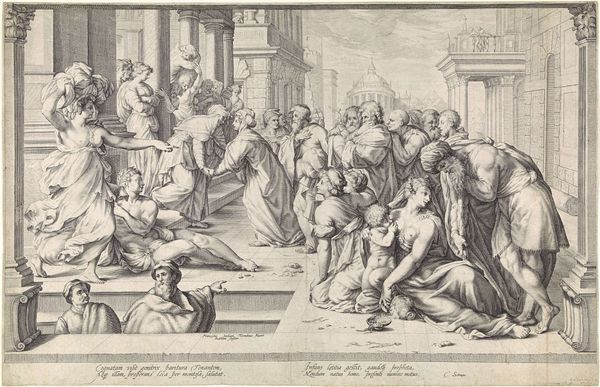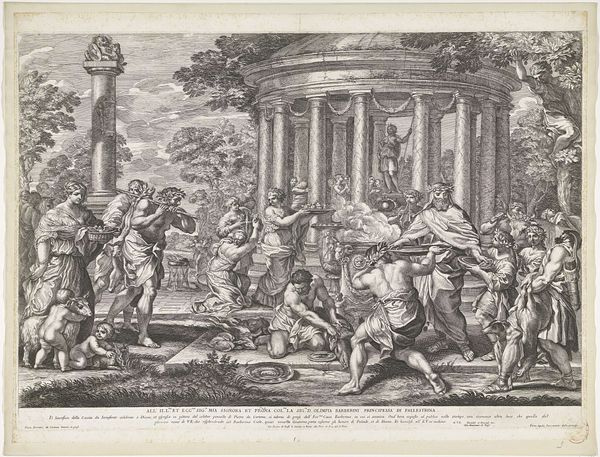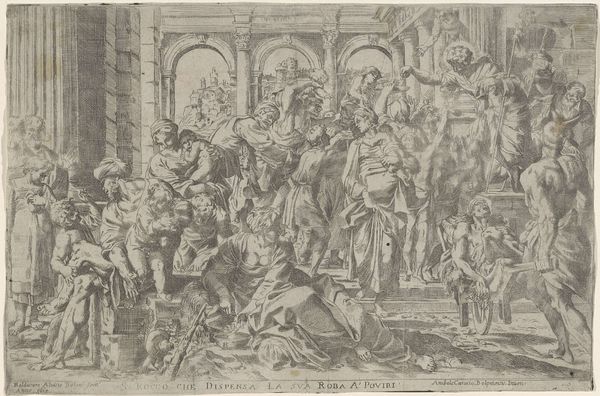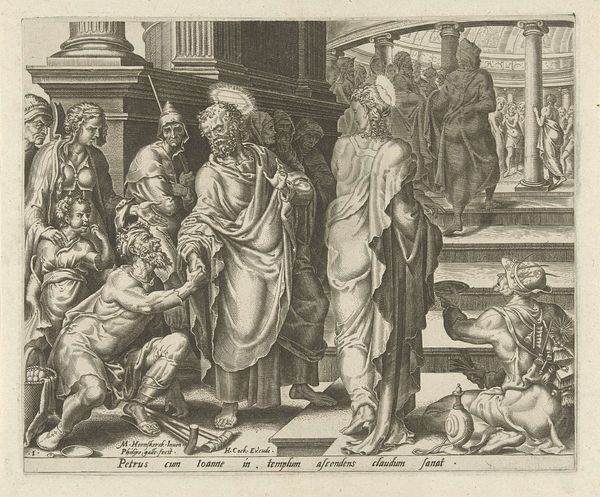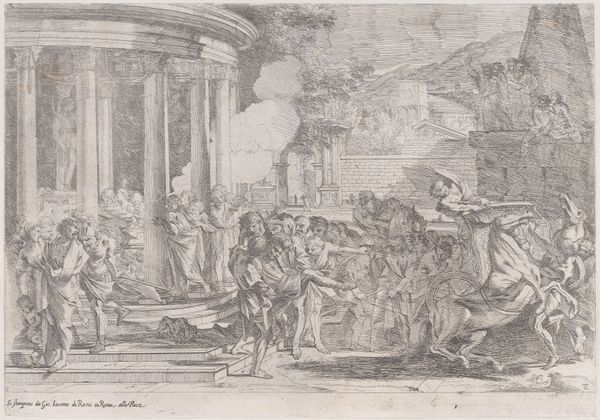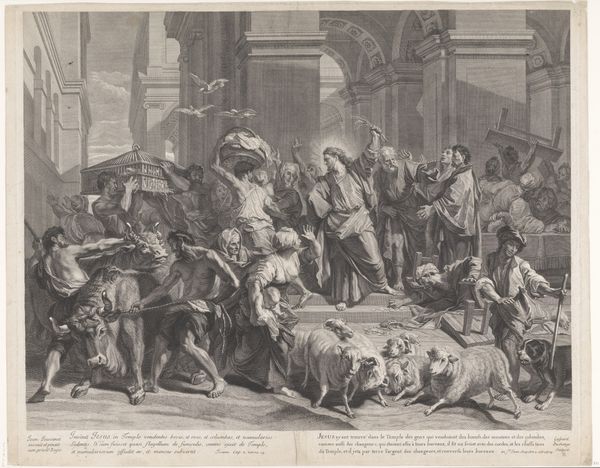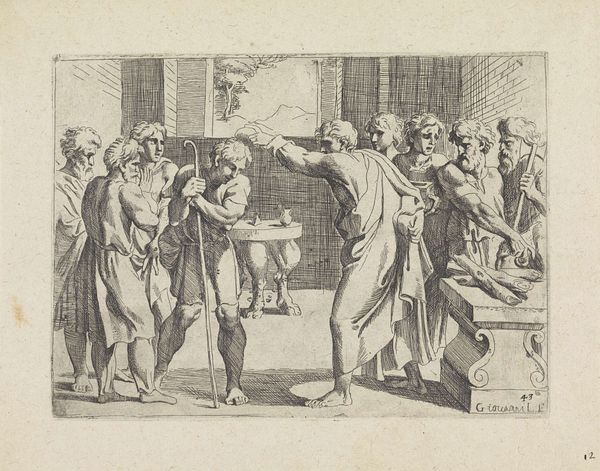
print, engraving
#
narrative-art
#
baroque
# print
#
figuration
#
history-painting
#
italian-renaissance
#
engraving
Dimensions: height 226 mm, width 325 mm
Copyright: Rijks Museum: Open Domain
Editor: This is Antonio Gherardi’s "The Scourging of Saint Martina," a print likely created between 1654 and 1702. It depicts a rather violent scene, full of frantic energy. What strikes me is the contrast between the apparent chaos of the foreground and the more composed, almost theatrical background. How do you interpret this work? Curator: The violence is undeniable, isn't it? But let’s consider the social and historical context. This print, though baroque in style, engages with themes central to the Italian Renaissance: power, religious persecution, and female agency, or, rather, its suppression. Think about how narratives of female martyrdom were often deployed to reinforce patriarchal structures. Does the image itself reinforce those structures, or subvert them in some way? Editor: That’s interesting. I hadn't thought of it in terms of female agency. The Saint, although being tortured, appears almost serene. Curator: Precisely. Gherardi isn’t just depicting a historical event; he's actively shaping a narrative. What does the staging of the scene suggest about the relationship between spectacle and suffering, public violence and religious ideology? Notice the gazes of the figures in the background. Are they complicit, indifferent, or even titillated? Editor: I see your point. They seem like spectators at a play. The entire composition appears highly constructed to convey the saint’s passive stance as if endorsing a propagandistic tool. I wonder, if Gherardi attempted to critique violence in this way. Curator: That is very perceptive. He uses the visual language of power to critique power, doesn't he? By understanding this, we can discuss the legacy of the print as it challenges those intersectional structures through subtle cues of dramatic spectacle. Editor: This gives me a lot to think about. The artwork feels both disturbing and thought-provoking now. Curator: Indeed, engaging with such a piece challenges us to question how images shape our understanding of power, gender, and history itself.
Comments
No comments
Be the first to comment and join the conversation on the ultimate creative platform.
